How 'Monster Maker' Rick Baker turned Michael Jackson scary for 'Thriller'
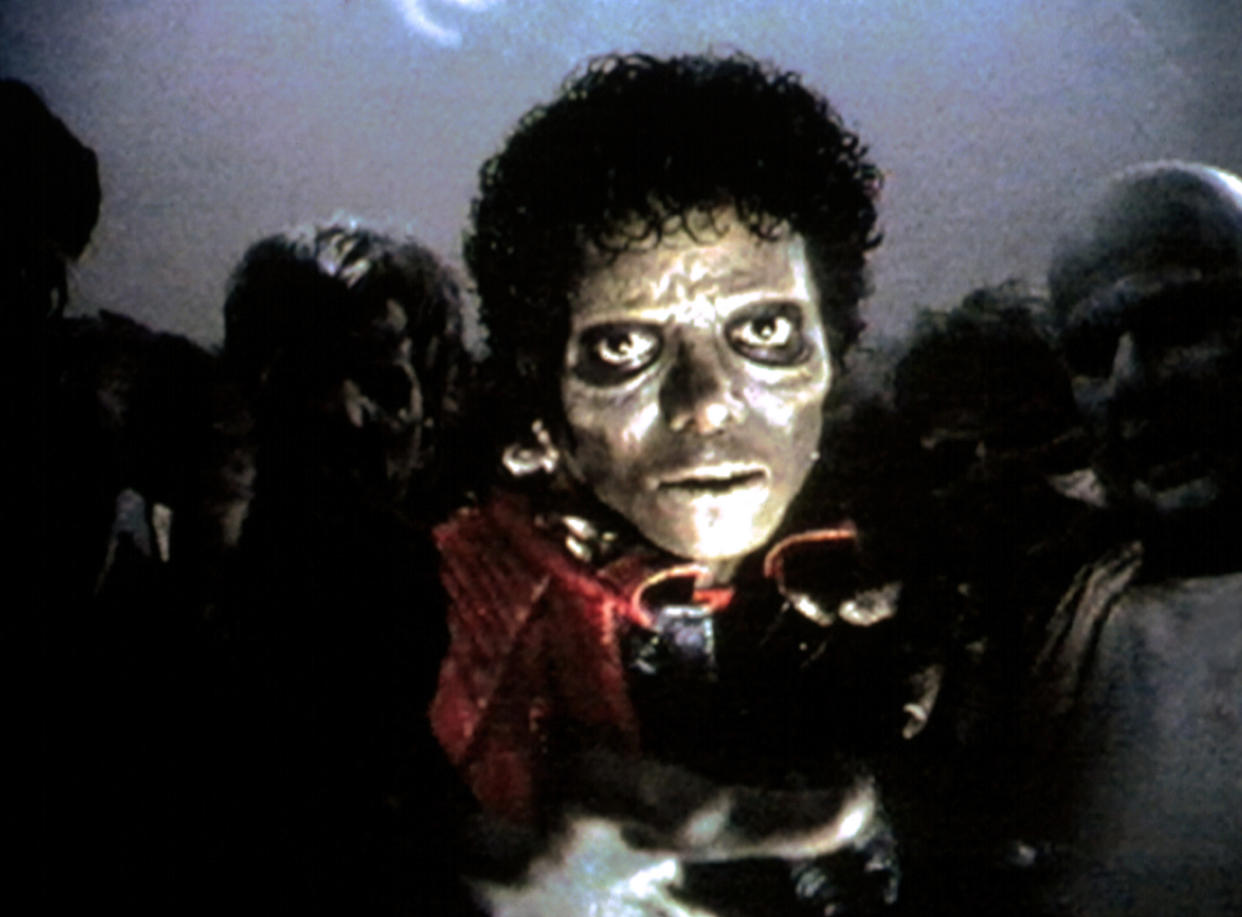
At the height of the ’80s horror boom, one name was synonymous with creature features: Rick Baker. Throughout that decade, the makeup legend earned the nickname “the Monster Maker” for designing and building the cinematic creatures that bit, slashed, and clawed their way through such hits as The Howling, An American Werewolf in London, and Michael Jackson’s ubiquitous music video for “Thriller,” which was released in movie theaters 35 years ago next month.
And Baker’s impact on the industry wasn’t limited to what appeared on the big screen; in 1982, he became the first artist to win an Oscar in the newly created Best Makeup and Hairstyling category for American Werewolf — one of only six horror movies to take home that statue to date. He went on to win a total of seven statuettes in his storied career.
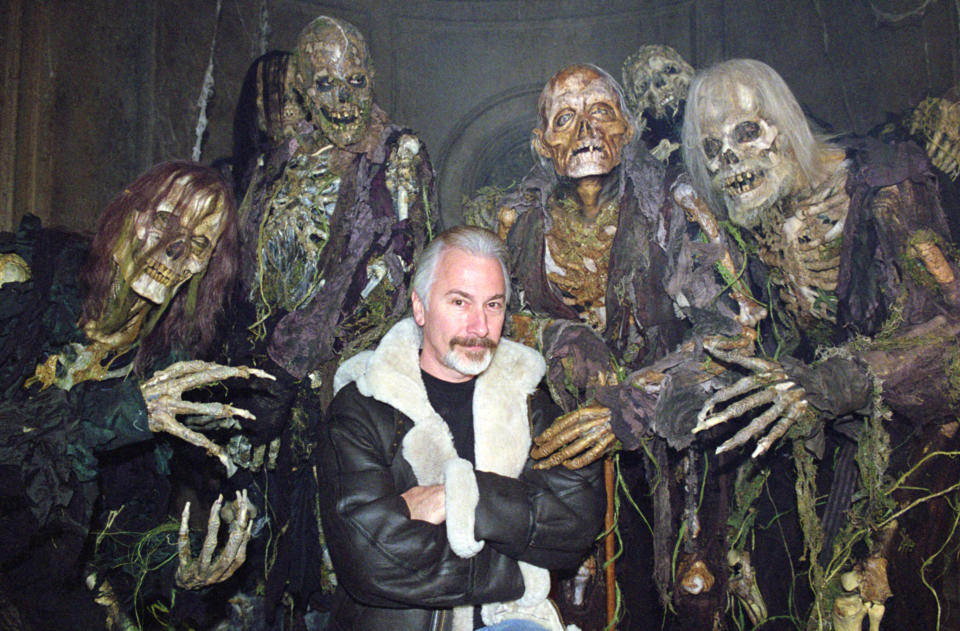
Since retiring from big-screen work in 2015, Baker has mainly pursued passion projects away from the bright lights of Hollywood. One of those projects is a remarkably detailed — and entirely freaky — bust of the Joker for DC Collectibles. On sale this Halloween, appropriately enough, via the DC Collectibles site, Baker’s Joker bust naturally emphasizes the Batman villain’s monstrous qualities. We caught up with the makeup master to get the stories behind “Thriller” and his other most memorable creations.
An American Werewolf in London (1981)
Werewolf movies were all the rage when Baker was a youthful monster movie fan in the 1950s, but those lunar-activated lupine creatures cycled out of favor by the time he entered the film business. Fortunately, the early ’80s begat a new litter of werewolf movies, and Baker was perfectly positioned to work on two of the best: Joe Dante’s The Howling and John Landis’s seriocomic story of a werewolf abroad.
I worked on John Landis’s first film, 1973’s Schlock; he had already written American Werewolf and told me the whole story. He said it was going to be his next film, and I was really excited! But after waiting about 10 years, I thought it was never going to happen. So I got a call from Joe Dante saying, “We want to do this werewolf movie — would you be interested?” I said yeah, but after I’d started working on it, Landis called and said, “Good news! We’re going to do American Werewolf.” I had to make it right, so I turned The Howling over to my protégé, Rob Bottin; I don’t consider it as necessarily my movie, but they did more of what I wanted to do, which was a biped werewolf.
For American Werewolf, Landis wanted a four-legged hound from hell — that was his direction to me. He also said, “I want to do a transformation like you’ve never seen before. I don’t believe that if you were changing into a werewolf you’d sit in a chair and be perfectly still as you change. I want to show the pain, how would you do it?” It was one of the rare times where I had total artistic freedom. He said, “You’re the expert, just make a cool werewolf!” Which I did!
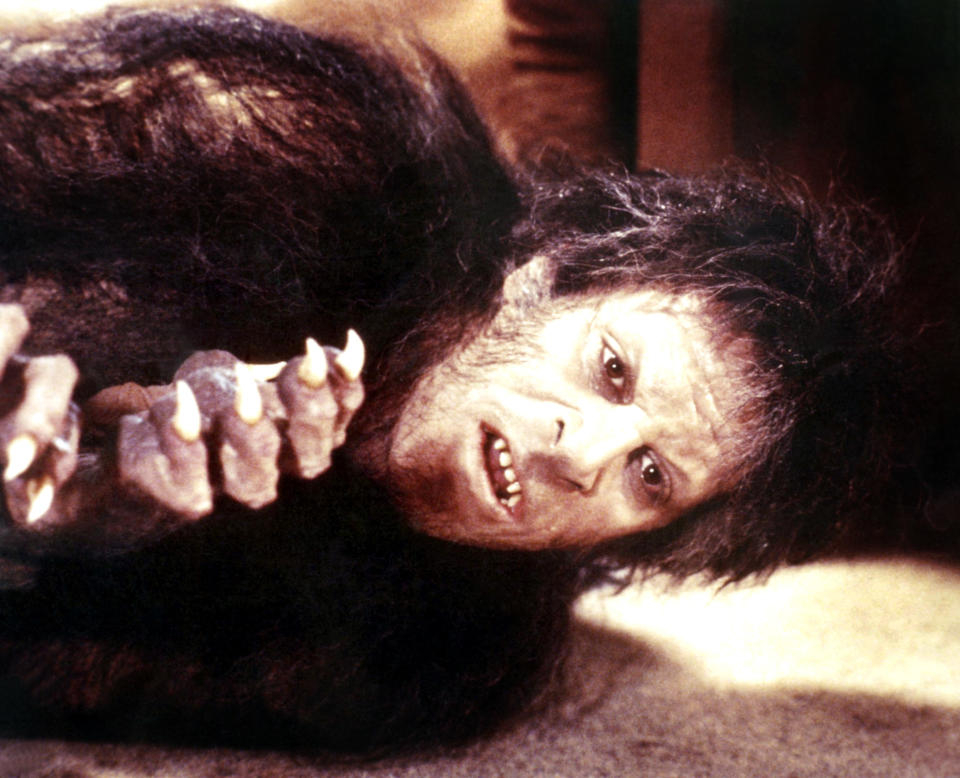
It was shocking to be nominated for an Oscar. At the time, I thought, “There’s no way in hell that the academy’s going to give an Oscar to this bloody horror movie with nudity and odd stuff.” So I was in shock when they called my name. To be standing up there in front of the crowd, and you see Meryl Streep and Jack Nicholson and all these people right there. I knew that words were coming out of my mouth, but I have no idea if I said what I wanted to say. After American Werewolf, [visual effects artists] became like celebrities, and I got to see the Golden Age of makeup effects happen, and then see it go away. I was just in the right place at the right time with the right skill set.
I don’t know if there is a perfect movie werewolf; personally I’ve always liked animal-people things. The Wolf Man was one of them films that inspired me to become a makeup artist, and I was so excited to do the remake. [Released in 2010, the new Wolfman starred Benicio Del Toro in the title role and was a famously troubled production — but it did win Baker his seventh and final Oscar.] That was hell, just because of the way the studio works now; it worked out in the end, but it could have been much cooler if they didn’t waste all my preproduction time. But that’s another story! [Laughs]
Thriller (1983)
You couldn’t find a bigger fan of An American Werewolf in London than Michael Jackson, who was in the midst of recording what would become one of the biggest-selling albums of all time. The King of Pop used his royal power to get the Werewolf band back together, tapping Landis to direct the music video for his record’s title track and bringing Baker onboard to do the monster effects. The landmark project premiered in movie theaters on Nov. 14, 1983. It would go on to win a Grammy for Long-Form Video and three MTV Video Music Awards, be the first music video enshrined in the Library of Congress’s National Film Registry, and hailed by Guinness World Records as “the most successful music video of all time.” And “Thriller“ wasn’t the only Baker-Jackson joint; the duo later collaborated again on the one-of-a-kind Disney experience, Captain EO.
John Landis said to me, “Michael Jackson saw American Werewolf and loved it. He wants to do a music video where he wants to turn into a werewolf. I’m going to send you a cassette tape — get some ideas.” So I listen to the tape, and I thought, “I don’t see making up this pop star. He’s going to be a pain in the ass.” I was completely wrong! First of all, Michael was incredibly shy; I worked in a funky, dirty workshop full of long-haired guys, and on the day he came in to do the life mask [a mold of the person’s face to use in the makeup design process], the first thing he did was hide in the bathroom. He just went in there and acclimatized himself.
But after that, he was great to make up. He was very patient and loved the process. Unfortunately, I found out on the day that John was going to do a making-of film, and I was like, “What are all these camera people doing here?” Now I’m thankful, because so many people come up to me and go, “The Making of ‘Thriller’ video inspired me to become a makeup artist.”
Early on, I decided that Michael shouldn’t be a werewolf; I said he should be more feline, and made him more of a fantasy cat creature thing. The scariest thing for me in that experience was the size of it, and the [limited] amount of time that we had. I said to John, “I’m assuming you’re going to cast these dancers immediately because it takes us time to do the life masks and all that stuff,” and he goes, “Eh?”
The dancers were cast three days before filming, so I couldn’t do the makeup the right way. I had some generic things that I could use, but I felt we should have cooler stuff. My crew and I all have our own life masks already, so I told John, “How about if we have zombies featured more, and it’s me and my crew?” So the zombies that come out of the graves are my crew and my friends, while the dancers are generic pieces that we made [quickly]. It was like, “These are your teeth, and you’re going to be this color.”
Michael and I became fairly close after “Thriller.” He came to my house a couple of times to watch movies and have dinner, and I went to his place with my wife to have dinner with Michael and Bubbles the chimp. And Michael actually dedicated a song to me! It’s called “Threatened,” and I think he was trying to make it another “Thriller,” because they cut in a Rod Serling rap. He dedicated the song to me, and then said, “I want to do a video of this song, and I want you to direct it.” I was like, “Uhhhh…”
Coming to America (1988)
While he made his name in monster movies, Baker later diversified his skill set to other genres, including sci-fi dramas like 1984’s Starman and family-friendly features like 1987’s Harry and the Hendersons. Coming to America was his first studio comedy, and it introduced him to an actor who would become an important collaborator throughout the latter half of his career: Eddie Murphy.
Once again, that came about because of John Landis. He told me, “I’m going to do this movie where Eddie Murphy’s going to play a whole bunch of characters, and you’ve got to do it — I don’t have a lot of money.” He always said that. [Laughs] I said, “Fine, what kind of character is he?” And John said, “Oh, one of them is like an old Jewish man.” And I went, “Like a Sammy Davis Jr. Jewish man?” He goes, “No, like a white guy.”
This was at a high point in Eddie’s career, so on life mask day, John came to me and said, “It’s going to be a traveling party. There’s going to be a lot of people here.” It was Eddie and his entourage, and it’s truly like they were partying all night long and ended up coming there to continue their party. I put the back half of his head in plaster bandage first, and he’s telling jokes to all these other guys. I grab his head and start smearing the stuff on and think, “I can’t do this makeup in the middle of a party.” I got through the day, and the mask turned out all right, but I said to John, “You have to talk to Eddie,” and he goes, “You talk to him!” He gives me the number and I get Eddie on the phone and tell him, “You’re going to think I’m a jerk, but I can’t do this makeup if you’re entertaining a bunch of people.” He was like, “Can I at least have a friend come for a little while?”
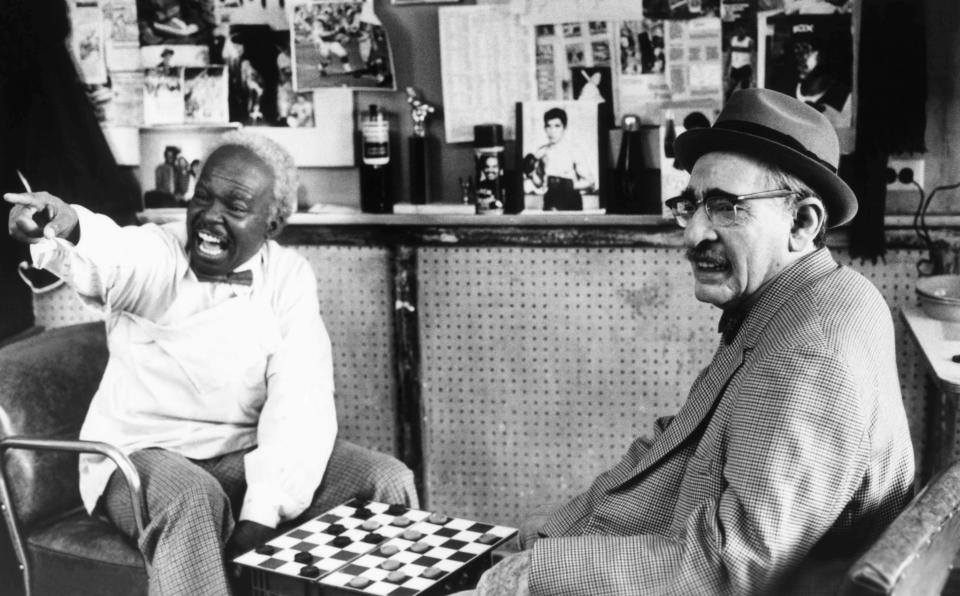
That makeup job was 15 separate pieces, and they were prepainted in the Caucasian color. What I liked right away about Eddie was that he would move around, make faces and stuff, seeing what it took to make it work. A lot of actors would put makeup on and say, “I can’t move.”
With every piece I put on him, he would say, “This looks so much more real than I ever expected. The Jewish character that I do is such a stereotype, I really feel that I’m not doing the makeup justice. I want to improvise the scene.” I got a video camera and pointed it at the mirror, and Eddie improvised a scene with one of his friends. It was really a serious performance and very different from anything I’ve ever seen Eddie do; he was playing this Jewish man that was mugged. I went, “This guy’s really good.” Then we all decided it was much better to do the stereotype in the end. I had a respect for his ability, because most of the time, actors treat me like I’m a dentist or something. Some makeup artists are fun to be around — that’s not me.
The Joker (2018)
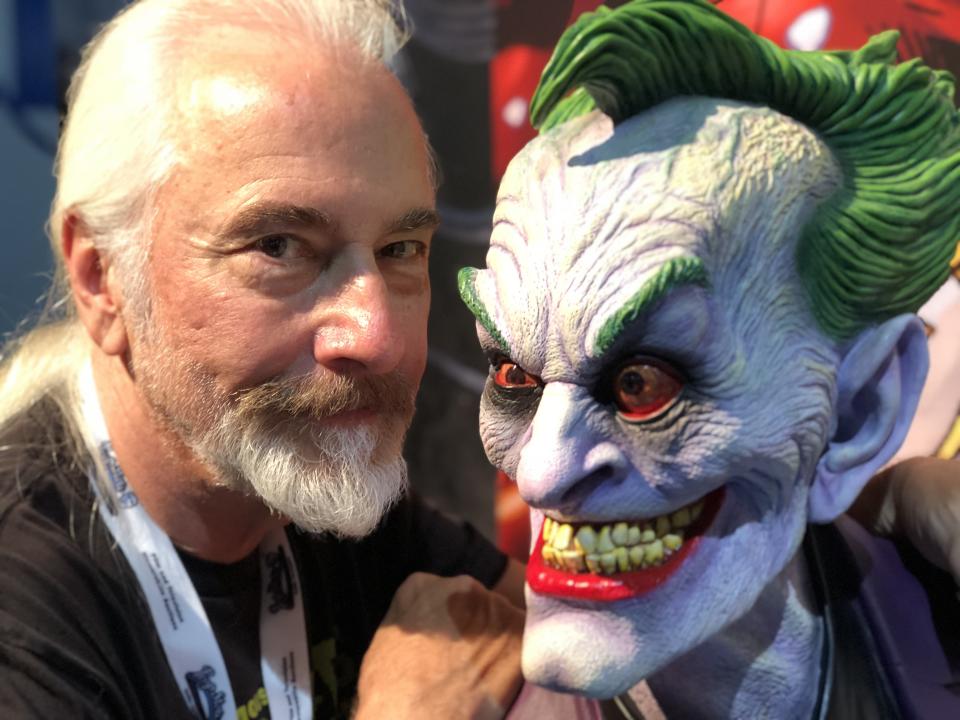
DC Collectibles gave Baker carte blanche in putting his own design spin on the Clown Prince of Crime. The finished bust will be available in two limited editions: a standard edition that retails for $1,000 and an ultimate edition, which carries a $1,500 price tag.
I had just retired from the film industry, and I was really excited about doing my own thing. My daughter works at DC in the collectibles department, and I took a tour, during which they said, “Would you be interested in doing something with us one day?” I went, “Yeah, maybe,” but it wasn’t a real sincere maybe. But then they contacted me, and said, “We really want you to do this — let’s talk.” I told them that I didn’t want anyone else to have input on it except me, thinking they would say no, but instead they said, “That’s what we’re looking for.” They didn’t have a specific character in mind, but I knew it had to be the Joker, because he’s the coolest one.
Every film version of the Joker has not quite been what I would have done, but I think they suit the movies they’re in. My favorite version is what actually inspired the Joker, Conrad Veidt from The Man Who Laughs. I wanted my version to be a crazy, demented, lunatic guy — to play that up. The first thing I did was a quick pencil sketch, and then I did a digital sculpture to refine it some and look at it from different angles. Because this is a bust, I could do things on it that you can’t do on a person. When you’re doing it as makeup, it’s not just the limitations of the face underneath, but also the willingness of the person that’s going to wear it. It would be hard to do this makeup on somebody, with the eyes especially.
I’ve got to say, it was intimidating! When I started, I thought, “Are people going to accept this different version?” I tried to keep enough of the green hair and all that stuff, but I hope I don’t get a bunch of hate mail now because I’ve screwed up the Joker. DC said, “Would you be interested in doing another one?” and there are a couple I would consider. The villains, of course. Who wants do a hero? Well…maybe Batman, because he’s a, you know, Dark Knight. [Laughs]
Read more from Yahoo Entertainment:

